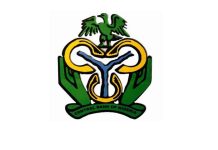Fitch Ratings has affirmed the African Development Bank’s (AfDB) Long-Term Issuer Default Rating (IDR) at ‘AAA’ with a Stable Outlook and Short- Term IDR at ‘F1 ‘.
The ‘AAA’ rating primarily reflects extraordinary support from AfDB’s shareholders, assessed by Fitch at ‘aaa’, which provides a three-notch uplift over the bank’s intrinsic rating.
AfDB enjoys strong support from its 80 member states, which include 26 non-African countries with high average ratings.
Callable capital subscribed by member states rated ‘AAA’, the largest of which are the US, Germany and Canada, accounts for 21% of the total.
This fully covered the bank’s net debt at end-2016, underpinning the ‘aaa’ assessment of shareholders’ capacity to support. The strong propensity of member states to support the bank in case of need is illustrated by on- going capital increases and the bank’s important role in the region’s financing.
Fitch notes that fast growth in lending in the last two years has translated into a rapid increase in AfDB’s indebtedness. Management has indicated that if there is no clear evidence of a capital increase within the next two years, it will curb lending growth to preserve the bank’s solvency metrics.
However, if no capital increase is approved by 2019, debt will not be fully covered by callable capital from ‘AAA’ rated countries. This would place substantial pressure on Fitch’s assessment of extraordinary support and, hence on AfDB’s IDR.
Fitch assesses AfDB’s solvency at ‘aa’. AfDB’s capitalisation is strong, but declining, as a result of the rapid growth in lending. Additionally, internal capital generation has been affected by the negative impact of low interest rates on the pension scheme and high relocation costs in Abidjan.
The bank’s equity-to-asset ratio decreased to 23% in 2016 from 27% in 2015, and based on the current trend, is projected to decline further in the coming years, although AfDB is still receiving annual installments from its 2010 capital increase.
Fitch assesses AfDB’s liquidity at ‘aaa’. This reflects excellent coverage of short-term debt by liquid assets (2.9x). However, Fitch notes that the share of the portfolio invested in securities or bank placements rated ‘AA-‘ or above (83% in 2016) is declining, although their quality is still assessed at excellent. Fitch understands that management intends to rebalance the treasury assets portfolio in order to increase the proportion of assets rated ‘AA-‘ or above. This would help underpin Fitch’s assessment of the strength of extraordinary support, given the relevance of liquid assets’ quality to the net debt calculation.
The -1 notch adjustment to AfDB’s solvency stemming from our assessment of its business environment reflects the high risk operating environment in which the bank operates. The majority of African countries are classified as low income by the World Bank. The average income per capita and average rating of member states are the lowest of all regional MDBs, and they are subject to an overall high level of political risk. This largely offsets the high quality of the bank’s governance and management as well as operational support from member states.














